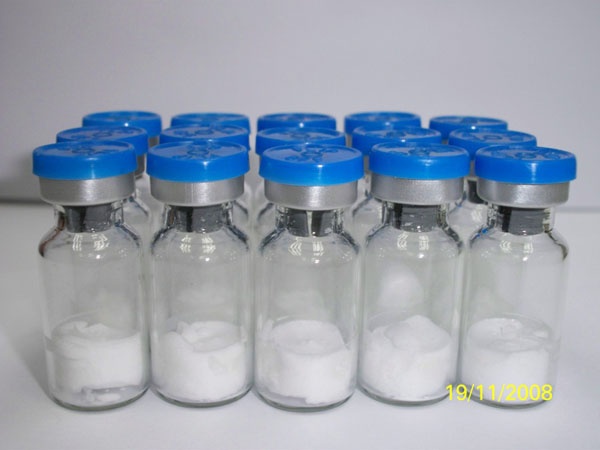Ipamorelin refers to a synthetic peptide that has powerful properties of releasing growth hormones, quite like GHRP-6. The chain of ipamorelin is fairly short and only has five amino acids in it. Its molecular mass is 711.86. Because of this, it can significantly increase muscle growth and burn fat at the same time.
While GHRP-6 is considered to be a hexapeptide, though, ipamorelin is considered to be a pentapeptide. Still, the strength that comes with it has the power to make normal growth hormones completely obsolete. What else can this peptide do, though? How can it be used? Also, how different is it from other GHRP peptides out there?
A regular dosage of ipamorelin consists of a 200mcg to 300mcg dose that is taken twice or thrice a day with a small insulin needle injection. It usually begins with 200mcg since it is known to cause several side effects, including headaches and head rushes. While it is possible to take ipamorelin anytime, it has to be remembered that it has certain growth hormone pulses that allow for maximum growth overall.
There are some very interesting results so far from the studies on ipamorelin’s effects on weight, growth hormone release and bone growth thus far. In one particular study, different doses were administered on research test subjects over fifteen days in order to test out the subjects’ reactions to it first.
Results showed that there were dose-dependent and distinct effects on weight gain, though they didn’t show any changes in their levels of IGF-1 whatsoever. They didn’t produce any bone development serum markers, either, nor did the amount of cells in their shin bones change in any significant manner. This happens to be a positive thing since it suggests that the muscle growth has fewer chances of experiencing cartilage or bone deformities in the long run.
After an aggressive dosage of ipamorelin, the pituitary gland reacted by reducing the plasma growth hormone levels as opposed to how unchanged they were after comparable dosages of GHRH. This is another positive thing since it proves that ipamorelin will not reduce the production of natural growth hormones overall. This also proves that ipamorelin is a selective growth hormone releaser.
Unlike GHRP-6, ipamorelin doesn’t bring about hunger, but its side effects do get worse when combined with anabolic steroids. This is because they influence the production and release of growth hormones and insulin growth factors, too.
In another study, ipamorelin was able to effectively release growth hormones from the pituitary cells of its research subjects in the same way that GHRP-6 can do it.
Yet another study shows that in healthy research test subjects, ipamorelin consistently released growth hormones in the same way as GHRP-6. It would be important to note that one of the growth hormone releasers that were tested actually affected the FSH, PRL, TSH or LH blood serum plasma levels in the end.
In theory, high doses of ipamorelin might increase cortisol or acetylchloine. However, this becomes more likely when GHRP-6 and GHRP-2 come into play. As a matter of fact, when ipamorelin is in the spotlight, there is hardly any increase in cortisol and acetylcholine blood plasma levels, even if the injections are much higher compared to the effective dose for comparable growth hormone release.
This just goes to show how effective ipamorelin really is as a GHRP receptor agonist or as a chemical that binds to a cell receptor and brings about responses with a certain selectivity for growth hormone release promotion on its own.
Another thing that makes ipamorelin stand out is the fact that it doesn’t bring out sudden increases of cortisol or prolactin the way that GHRP-6 and GHRP-2 tend to. Unlike GHRPs, ipamorelin is generally slower when it comes to its delivery, so growth hormone levels tend to increase much faster in turn. The slower the release is, though, the more sustained and the more natural the effect will be.
Ipamorelin was also synthesized as innovate and novelty mimetic of ghrelin, so it can improve gastric motility, too. There are several ongoing clinical studies with ipamorelin when it comes to this, but the first ones actually began in the 90s. This research compound also happens to be a selective G-hormone secretatogue and an agonist of the ghrelin receptor.
Overall, ipamorelin seems to be the latest wave in growth hormone releasing pepetides out there. It seems to be safer and much more effective, and it seems to last longer, too. More studies are currently being conducted on ipamorelin, but so far, it looks like a very serious contender when it comes to the world of anabolic advancement.
|




 Bestropin
Bestropin


